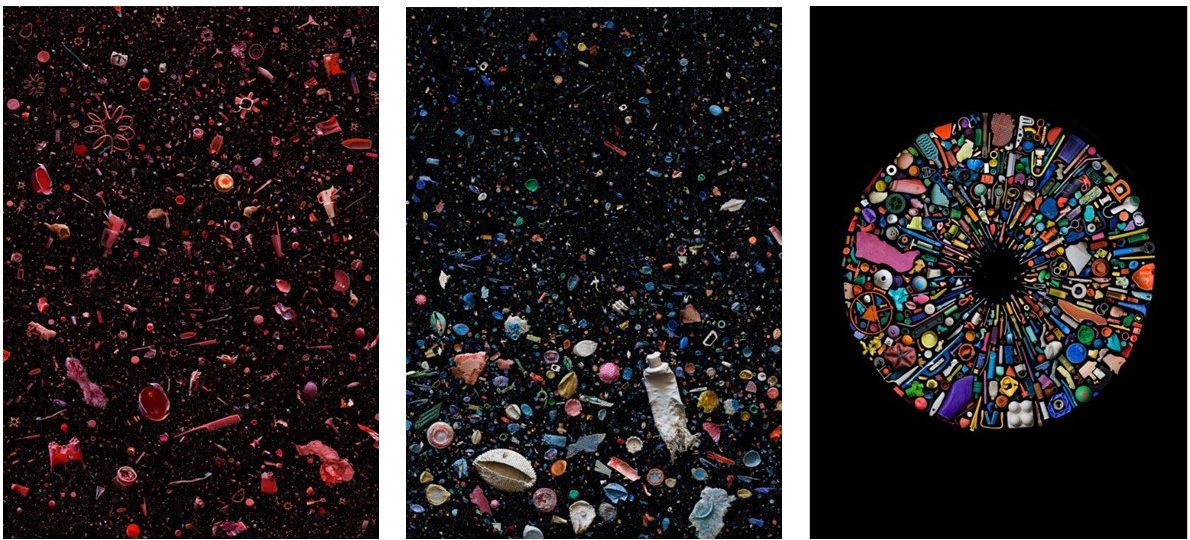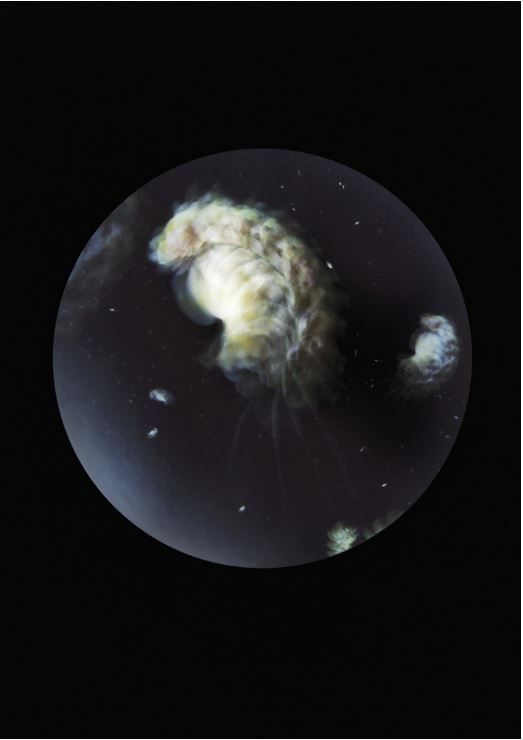
BEYOND DRIFTING: IMPERFECTLY KNOWN ANIMALS, Mandy Barker, 2017

Method: Barker shot on a black background using natural light, arranging the objects in groups and photographing them at varying distances so they appear to be different sizes. Each item was photographed twice to show both sides, and to help populate the final, densely packed collage. It took nearly three days to get everything just right, then another six hours to create the composite, carefully layering hundreds of images in Photoshop.
Image Analysis

“Pleurobrachia stileucae” is an image featured in Mandy Barker’s ‘Beyond Drifting’ project in which she looks at micro-plastic pollutes and their effects on plankton. The title of the image uses nomenclature, a method of devising new scientific names, to imitate early Latin origins where plastic items take the place of new organisms. The word ‘Plastic’ is hidden within the name –Pleurobrachia stileucae.
This image depicts the remnants of a partially burnt plastic flower, collected from Carrigaloe estuary, Cove of Cork, Ireland, the same location as naturalist John Vaughan Thompson’s plankton samples from 200 years ago. Thompson’s work on marine invertebrates lead him to a number of revolutionary new concepts in fundamental systematics, he developed a technique of collecting plankton with a fine mesh net held open by a hard frame, to which ropes for towing are attached. This equipment is still used today. His work was carried out at a time when plankton didn’t even have a name. While in Cork he published several works including “Zoological researches and illustrations” (1828) which is listed as having been taken by Charles Darwin on his famous Second voyage of HMS Beagle.
The item is captured using a slow shutter speed representing the movement of individual plankton in a water column. Captured in a circle on a black background, it resembles a planet like construct demonstrating the impacts we have on the earth. The use of ‘circles’ in the series is also a reference to the perspective you would have when looking through a microscope.
